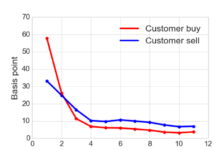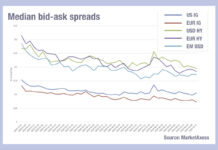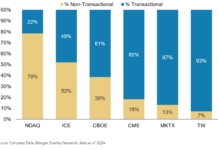Faced with rising trading volumes and falling returns, buy-side bond desks are frequently either shrinking or at best struggling to match resource with requirements.
We spoke with several market participants about the ways they see buy-side firms outperforming their apparent capabilities, using hacks or more frequently ‘force multipliers’ to overcome an imbalance in scale.
The first issue was identifying execution goals. Fighting for best price at the expense of getting trades done, when time is of the essence, is not clever. Balancing execution goals such as fills and speed of execution against the price received is a major starting point as it then allows the desk to bucket up certain trades. While there will always be grey areas between high touch and low touch trading, getting a sense of what is clearly high- or low-touch helps define the decision tree.
Once execution goals are clearer, it is easier to take advantage of trading protocols that better align with the target of speed, price or size.

“You have to figure out how to automate your odd lot trades and trades with high liquidity scores,” says Iseult Conlin, head of US institutional credit at Tradeweb. “If there’s a click-to-trade stream, and the bond is bid, how do you make those trades fully no-touch, automatically routed to a venue and executed?”
More complex trades have to be settled in discussion with the firm’s broker dealers, and that has to factor in several points. The first is how they can offset the risk they are carrying on a trade. Non-comp trades may be perceived to carry less competitive pressure on the price offered, but they can allow a larger block to be traded. Any rebalancing or transition management might demand a larger set of securities traded with certainty, favouring portfolio trading or trading at the close.
Using a request-for-market (RFM) to get two -way price on a trade will also limit information leakage and can help limit the impact on the dealer’s risk.
To understand how it may be best to trade with counterparties pre-trade, a systematic analysis of pre-trade data is essential, with axes being efficiently consumed and assessed, in order to get a sense of the optimization, so
“We have more buy-side clients who look at axes from the dealer community, run an axe optimisation on their side, and then decide to take 60% of one dealer’s axes, 50% of another and 40% of another,” says Conlin. “That’s become really popular.”
Getting pre-trade right can significantly reduce the friction of trading by getting the best fit to a trade instead of blasting it out and adding risk into the process.
Finally, reducing the work needed to get both pre-trade and at-trade running in an efficient workflow can really cut friction and optimise the routing of orders. Doing that requires technology, but also interoperable technology, so desktop interop systems using FDC3 can prove invaluable here.
“You need to have the plumbing. You need to have technology at the core of what you’re doing to be able to scale because being able to hire more traders isn’t always possible in this market environment,” says Conlin.
©Markets Media Europe 2023
























